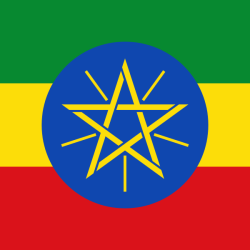Mummification was far more than just preserving a body. It was a deeply religious act, intricately tied to the Egyptians’ core beliefs about death, the afterlife, and the eternal survival of the soul. The elaborate process and the vast resources dedicated to it reflect its fundamental importance in their culture for millennia. Modern science continues to unlock the secrets held within these preserved remains.
- Origins & Evolution:
- Accidental Start: Early burials in hot, dry desert sand naturally desiccated bodies, creating the first “mummies.”
- Problem with Coffins: Moving burials into coffins removed bodies from the dehydrating sand, leading to decay.
- Intentional Mummification: Developed over centuries (starting around 2600 BC) to artificially recreate the desert’s drying effect and preserve the body within coffins/tombs.
- Core Purpose:
- Religious Belief: Essential for the afterlife. The preserved body was the eternal home for the soul/spirit.
- The Three Spirits:
- Ka: The life force/double, needed the preserved body and tomb offerings.
- Ba: The personality/soul, could move between the tomb and the world.
- Akh: The immortal spirit, needed to journey through the underworld for final judgment. All three required the preserved body to function.
- The Mummification Process (70 Days):
- Embalming Priests: Specialized, ritualistic, and required anatomical knowledge.
- Organ Removal:
- Brain: Extracted via the nose with hooks (often damaging the face).
- Internal Organs: Removed through an abdominal incision (usually left side).
- Heart: Left in place (center of being and intelligence).
- Other Organs: Stomach, liver, lungs, intestines preserved separately in canopic jars (early periods) or treated and returned to the body (later periods).
- Drying: Body packed inside and out with natron (a drying salt) for ~40 days.
- Cleaning & Restoration: Natron removed, body washed. Sunken areas padded with linen; false eyes added.
- Wrapping: Hundreds of yards of linen strips, meticulously applied (fingers/toes individually wrapped first). Amulets placed within wrappings for protection. Religious texts/prayers written on strips. Resin applied between layers. A funerary mask placed over the head/neck wrappings.
- Final Shroud: Outer shroud secured.
- Who Was Mummified?
- Pharaohs: Almost always.
- Nobility & Officials: Often.
- Common People: Occasionally, if they could afford it (expensive process).
- Sacred Animals: Bulls, baboons, cats, birds, crocodiles.
- Scale: Estimated 70 million mummies over ~3000 years.
- Fate of the Mummies:
- Ancient Grave Robbers: Plundered tombs for treasures.
- Medieval “Medicine”: Ground into powders for potions.
- Modern Treasure Hunters: Souvenir hunting, careless destruction.
- Industrial Use: Mummy linen used for paper; bodies burned for fuel.
- Best Preserved: Pharaohs & elites (better embalming, more secure tombs).
- Famous Examples:
- Tutankhamun (“King Tut”): Boy pharaoh (18th Dynasty). Tomb discovered intact by Howard Carter (1922), providing an unparalleled glimpse into royal burial treasures. Famous “curse” legends.
- Seti I: Great warrior/pharaoh (19th Dynasty), father of Ramses II. Known for military campaigns and a magnificent tomb.
- Ramses II (“Ramses the Great”): Long-reigning (67 years), prolific builder, many wives/children. His mummy was famously flown to Paris in 1974 for conservation (complete with a passport listing occupation as “King (deceased)”). Medical examination revealed details of his health and embalming.
- End of the Practice:
- Christianization (4th Century AD): Shift in religious beliefs made mummification unnecessary for the afterlife.
- Lost Art: The specialized knowledge and practice faded away.

- Modern Study:
- Historical Sources: Herodotus (5th Century BC) provided early written accounts.
- Technology:
- X-rays: Allow non-invasive examination of bones, artifacts within wrappings, etc.
- CT Scans: Provide detailed 3D images.
- DNA Analysis: Studies kinship, diseases, ancestry.
- Endoscopy & Autopsy: Physical examination of unwrapped mummies.
- Insights Gained: Health, diseases, diet, average height/lifespan, causes of death, embalming techniques, royal lineage, daily life.











